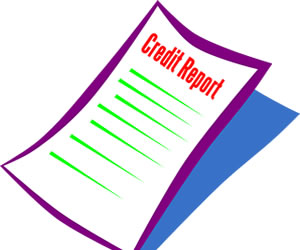Credit Cards for People With Bad Credit
If your credit history is shaky (even if you've declared bankruptcy), you can still apply for bad credit credit cards and begin to re-establish your credit worthiness. Some banks offer guaranteed cards, where they will basically accept all applications with a security deposit. Other banks determine acceptance based on employment or income level.
Generally companies who offer credit cards for people with poor credit will offset their risk by charging higher interest rates, requiring security deposits, charging annual fees, and establishing lower credit limits.
Unsecured cards for poor credit
Unsecured credit cards for people with poor credit are issued by subprime lenders. These companies often charge upfront processing fees and higher than average interest rates, offer low credit limits and many even charge monthly fees as well. Unfortunately, subprime unsecured credit cards can cost over $125 more per year than a secured credit card with the same credit limit, according to a NerdWallet study on subprime consumers.
Another option for an unsecured credit card is a department store card. Retail stores have relaxed their credit requirements, so you may qualify for one. Even though the credit limit on these types of cards is often lower than a regular credit card, they are preferable to a subprime credit card. Some store cards even offer loyalty benefits and discounts, but you need to be aware of the interest rate that is being charged. If you’re working on improving your credit score with one of these cards, it’s best not to charge more than 25% of your credit limit during a billing period. And then you want to pay the balance off in full when the statement comes in.
Secured credit cards
Secured credit cards require a deposit which guarantees the credit limit on your card. Basically, if you don’t pay your balance, the creditor will still get the money owed. A lot of people are reluctant to do this because they don’t have enough money to make the initial deposit. If the security deposit is what’s keeping you from getting a credit card, you can start saving up for it. By simply saving $50 each month, you’ll have saved $300 in six months. Granted, you won’t have a very high credit limit with a $300 deposit, but at least you’ll be able to start rebuilding your credit.
The good thing about many secured credit cards is that they report to the main credit bureaus. And this is what you want to help improve your credit standing. You may even qualify for an increase in your credit line if you stay current on your account for at least a year. Also, if you pay your balance in full and on time consistently, many issuers will refund your deposit and may even convert your card to an unsecured credit card as you credit score improves.
If you're considering a secured credit card, you might check to see if your local bank offers these types of cards. This makes it easier to monitor your card and transfer funds if necessary.
Before you apply for a credit card
Before applying for a credit card, you should begin by reviewing your credit report for any information that is in error. If there are errors on your credit report, here is some information on disputing a credit report mistake. If there are delinquencies, you can work on bringing these accounts up to date. Sometimes correcting your data and improving your payment history can help build up your credit worthiness enough to apply for an unsecured credit card with better terms.
What to watch for when applying
- Credit Reporting – Not all credit cards for bad credit report to the main credit bureaus. Since your main objective is to improve your credit, you want your credit card activity to be reported.
- Annual Fees – This is the amount the credit card companies charge to maintain your credit line. Annual fees vary a lot between different issuers and cards, so pay attention. Eventually, you may be able to qualify for an unsecured card that doesn’t charge an annual fee.
- Other fees – Often charged on subprime unsecured cards, these can include application fees, activation fees, processing fees, and monthly maintenance fees. These extra fees quickly add up and make it very expensive to own these cards. Many times you’d be better off with a secured card charging lower interest rates.
- APR – This is the interest rate you’ll be charged on your balance if it’s not paid in full each month. Hopefully you’ll be diligent about paying off your bill, but if you don’t, you want to make sure you paying the least amount of interest. When you’re shopping for credit cards, be sure to factor in the interest rates in your comparisons.
Credit Card Options for Bad Credit
It’s a good idea to shop around and compare the different rates and terms before you apply for a card. And don't apply for multiple credit cards at once as this can hurt your credit score even more. You only need one credit card to help start improving your credit. You can check out the various offers below to find a credit card that fits your needs and circumstances.
Building your credit
Once you’ve applied for and received your credit card, you can take steps to start building your credit back up. When you begin using your card, try to only use a small portion of your available credit. And when the statement comes in, make sure to pay it in full each month. By doing so, you’ll begin to establish a record of making on-time payments.
Over time, you’ll begin to see you credit score start to rise. And this will allow you to eventually qualify for a better credit card or a higher line of credit.
The cards listed above may not be your only option. You can check out other offers in the following sections:

